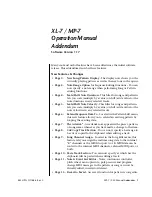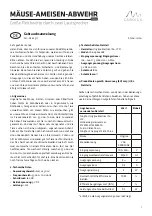
Chapter 2: Transducer Installation
37
Hole saw:
Fiberglass or wood
Drill 2" (51 mm)
Aluminium or steel hull
Drill 2-1/8" (54 mm)
Sandpaper
File (for installation in a metal hull)
Mild household detergent or weak solvent (alcohol)
Marine sealant
Slip-joint pliers
Silicone grease or petroleum jelly
Tie-wraps
Cored fiberglass hull installation:
Hole saw for hull interior 2-3/8" (60 mm)
Cylinder, wax, tape and casting epoxy
Fairing;
Level and protractor (installation with a fairing)
Rasp (installation with a fairing)
Preparation
Fairing
Most vessels have a deadrise angle at the transducer’s mounting location. If the
transducer is mounted directly to the hull, the sonar beam will be tilted off-vertical
at the same angle as the deadrise. To offset this deadrise angle, you can install a
transducer fairing. Different fairings are available to fit various transducers.
CAUTION: Using a Fairing
If thru-hull transducers are not carefully installed and fitted to the
shape of the hull, the vessel may take on water. To ensure proper
alignment and a secure fit, these transducer models MUST be
installed with a fairing. In addition to improving sounder
performance at all speeds, the fairing allows better fitting to the
hull and dramatically increases the sealing surface.
Fairings are also strongly recommended for use with other high performance
transducers. See the table that follows.
The fairing is used to:
• Vertically orient the sound beam by mounting the transducer parallel to the
water surface
• Minimize aerated water flowing over the transducer’s face by mounting it in
deeper water
• Reduce drag by directing the water around the multisensor
















































